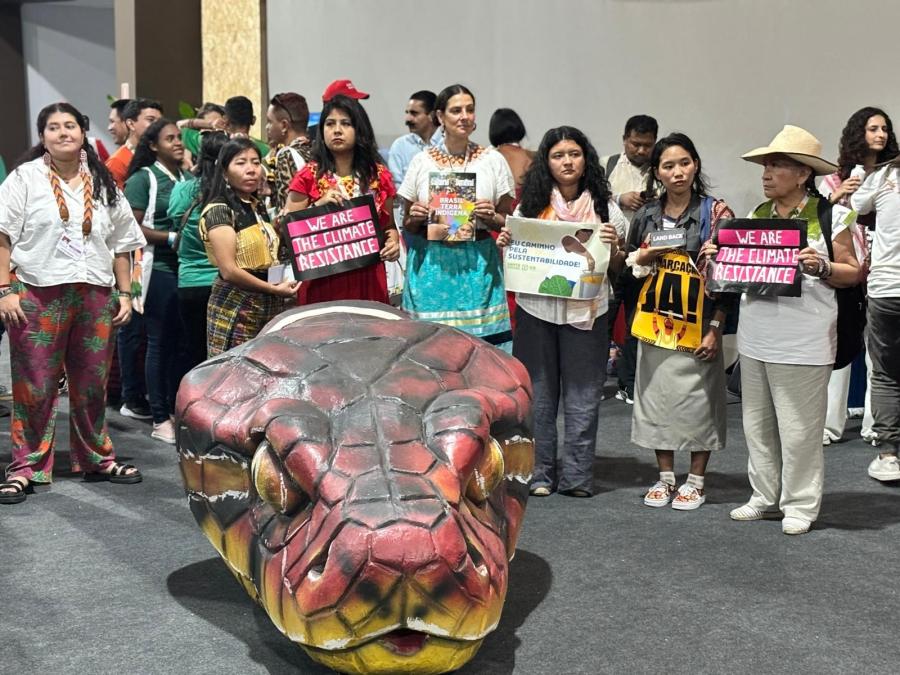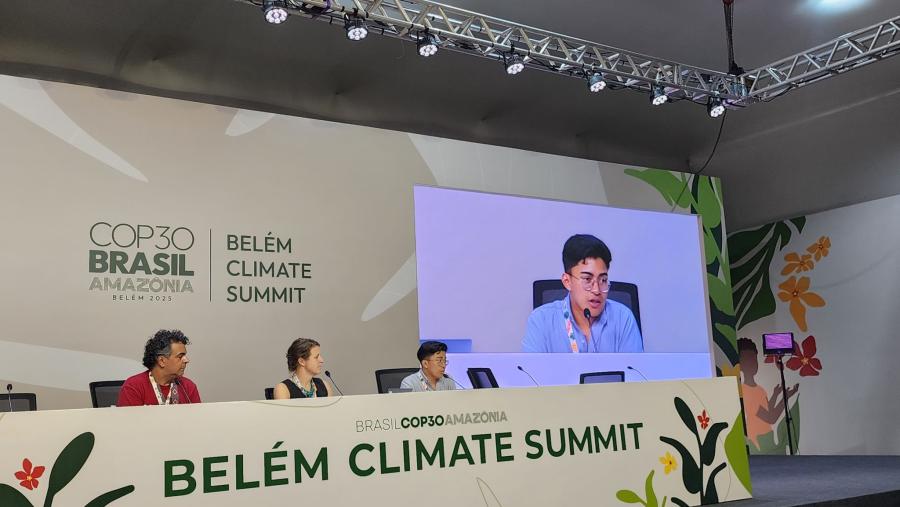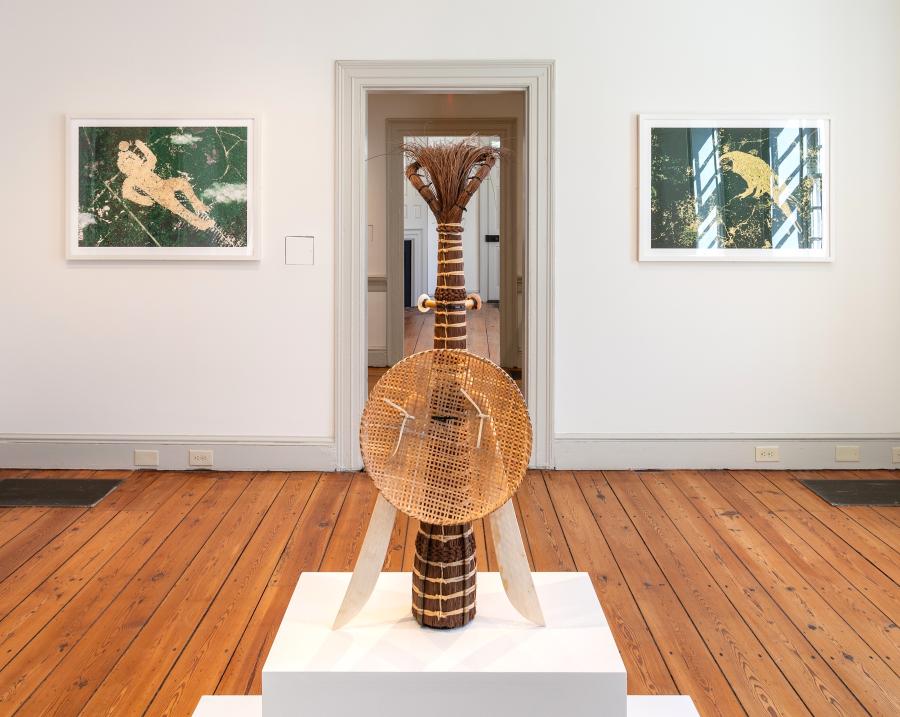Traditional Music in Community Life: Aspects of Performance, Recordings,. and Preservation
How does a community maintain an identity? What motivates its members to work together, to struggle for common goals? How do its members resist forced changes in order to create a future of their own design? Although people who write books tend to attribute most of the significance of social and religious life to ideas phrased in words, many deep-seated community bonds are forged through the senses. They are created and renewed by experiencing sights, aromas, tastes, tactile sensations, and sounds. Artists, cooks, dancers, and musicians know this - but their most convincing arguments don't use words at all.
The repetitive, structured, often danced-with sounds of music are found in almost every society - along with language. There is something deeply human about music, but deeply cultural about it as well, for - like languages - there are many forms of music. Unlike language, however, music does not require "understanding." People may be moved by music of peoples whose language means nothing to them, and the same musical performance may mean different things to different people.
Although music is popularly associated with entertainment, leisure, and a degree of irrelevance in the United States, it is rarely "just" entertainment. Music can move people. And because it can move them deeply, members of communities around the world use music to create cultural identity and to erase the cultural identity of others, to create unity and to dissolve it. Some musicians are arrested, tortured, jailed, and sometimes killed while others are invited to the seats of power; some musical events are supported and others are banned. From the blacklists of the McCarthy era that drove many performers off radio and television to the debate over rap lyrics and sampling, strong emotions have been aroused by musicians and their music in the United States as well.
Technology is transforming the way people experience music. Music today can be recorded (audio recording invented in 1877), stored (first sound archives established in 1899), broadcast on radio waves into homes (first U.S. commercial stations in 1920), sent through wires to speakers in elevators, factories, and stores, and most recently it can be captured in satellite dishes all around the world. Many people today probably experience music more often through recordings than in live performances. As a result, recordings (whether audio or video) take on personal, social, political, and economic significance of their own. People in many places can participate in more kinds of music than at any other time in human history - and the selection of what to perform or listen to becomes an issue of cultural significance.
This issue of Cultural Survival Quarterly focuses on the way music is being used today to express and create community and cultural identity in eight very different communities.
The Suyá Indians of Brazil represent the classic "endangered" culture - a small scale tribal society in a fragile ecosystem dealing with very real threats from a much larger frontier population. They use music and ceremony to re-create and celebrate who they have been and establish what they wish to be. I focus on the specific sound structures they create, because music is sound, and specific sounds carry with them specific significance for their performers and audiences.
While Croatian villagers and the Suyá Indians are different in many respects, there are some real similarities in the importance of musical performance to the two communities. Tvrtko Zebec describes how a group of citizens from the wartorn village of Oriovac wrote some new words to an old song and dance form, and performed it in full village dress at a folk festival in Zagreb. Tracing the meanings of the event, he shows how the music at once looks backward to earlier struggles and also makes a statement about the present and hoped-for future for both the villagers and the nation itself.
Adam Novick begins in a modern African nation-state, in the shadow of a satellite dish, and describes a trend reported around the world: the disappearance of many older, local traditions and their replacement by global popular music. If the past is a guide, certain musical traits will continue to be simplified and a lot of repertory will disappear completely. Outsiders cannot force people to perform what they wish to abandon, but they can record it, celebrate its beauty, and increase the prestige of somer performers by making their local traditions available on the radio, in the stores, and whenever possible through the satellite dishes.
Traditional musicians, scholars, lawyers, and cultural organizations should work together to change copyright laws that favor popular music over traditional music, and transform practices that tend to reward compilers rather than the traditional musicians whom they record. Recordings can be a reasonably useful type of income for a community if the community has control over what appears on the recording, receives appropriate advances and royalties, and earns income from licensing. Compared to producing handicrafts for sale - which often alters labor practices, endangers certain plant and animal species, and affects the quality of the artifacts themselves - recordings interfere far less with the internal dynamics of a society.
Many recordings of tribal societies have been made by researchers and deposited in archives where they are presumed to be of interest only to anti-quarians. The next two articles illustrate some of the ways in which archival collections of early recordings have contributed to the survival or growth of community cultures in Australia and the United States.
Grace Koch describes how recordings of Australian Aboriginal music, originally made for scholarship, are now being used as evidence in land claims cases to prove the Aboritines' rights to their traditional lands. When people deposit collections in museums and archives, they never know the uses to which they may eventually be put. In this case old songs contain the evidence that will preserve large areas of Aboriginal lands for the groups that originally used them. The new use of Aboriginal music has also transformed the institution responsible for the archives in many important ways.
Judith Gray describes how the American Folklife Center at the Library of Congress undertook a large project to return early recordings to the peoples who performed on them. They "repatriated" the music and speech originally recorded on old wax cylinders to American Indian communities, and found that not every community was very interested in its old recordings. For those groups that have shown interest, the recovery of music previously thought lost has been a moving and important event.
Tom Vennum and Richard LaFernier's discussion of Ojibwe powwows in Wisconsin in the early 1990s presents another important aspect of musical performance almost everywhere: body ornamentation and dress. The Suyá Indians were new ornaments and paint themselves with care; the Croatians take pride in their local dress; and in the United States special clothes are often worn at performances where music is featured - whether tuxedos, tie-dyes, funky, cut-offs, or some other style. Powwow dancers not only attach great significance to many parts of their dress, the garments themselves may represent a community of friends and relatives. Richard LaFernier's description of the origin and significance of his dance attire is very specific to his own family and community, but it represents an aspect of musical performances in many parts of the world.
Ann Olumba and Diana N'Diaye highlight the significance of radio broadcasts for African immigrants in the United States. Through well-crafted radio programs, producers of two shows help create and maintain a community among far-flung immigrants residing in the Washington, D.C. area. Local radio is an effective way that isolated members of a community can remain in contact with the vibrancy of their cultures. It is important to note, however, that the large, high-rotation commercial radio stations rarely feature music of and for immigrant communities. Initial plans I saw for multi-station digital radio also lacked much diversity. The role of addressing local community interests falls to the smaller non-profit stations whose funding is frequently in jeopardy.
Amy Horowitz and Reuven Namdar raise an issue of pressing urgency for most nation-states today, including all of the countries of the preceding contributions. In the 19th century, most nation-states were created with an ideology of cultural singularity, often based on the religion, folklore, and symbols of one region, or one part of the population. In the late 20th century, such homogeneity can be found in only a few nations in the world. It has been replaced by a multiplicity of peoples, and a multiplicity of cultures within each nation. Israel, which created itself as a nation with the return of a far-flung diaspora population, also created its own concept of a "national culture." But as Reuven Namdar, one of the great songwriters and performers in Israel testifies, there are still significant cultural ghettos.
Most human beings today live in complex nation states. And the most endangered peoples and cultures are not necessarily those in distant forests - they are often large minority groups within nations that suddenly erupt into civil war or persecution. Music is one of the ways that communities establish themselves and try to survive; music is also one of the tools other people may use to try to dominate them. Whatever is happening, music is often serious as well as beautiful, urgent as well as transcendent.
Article copyright Cultural Survival, Inc.



